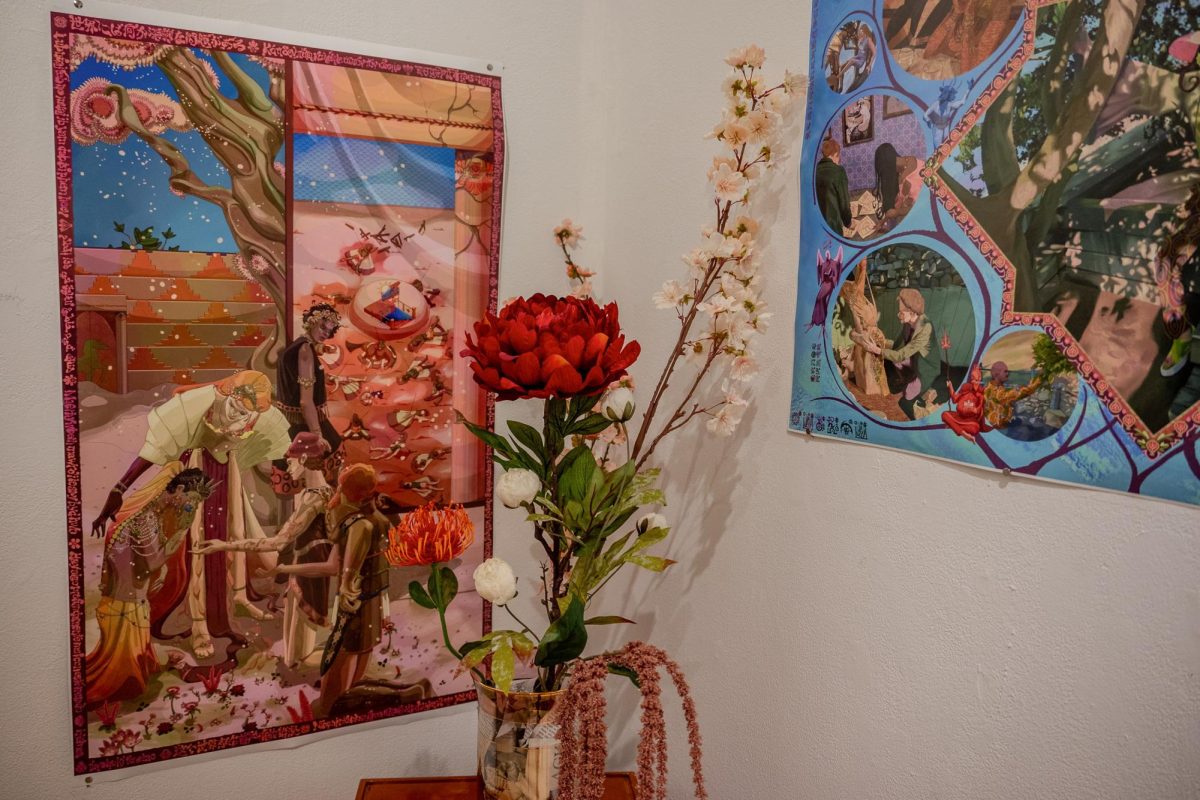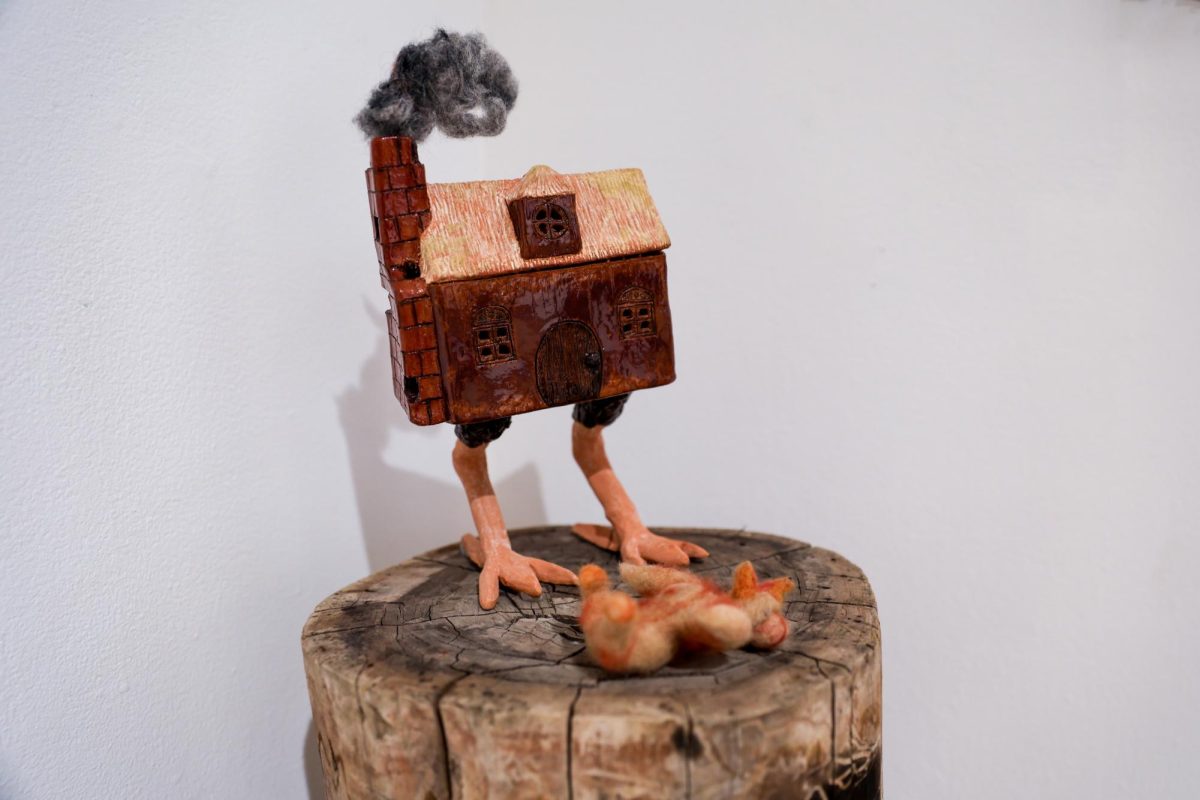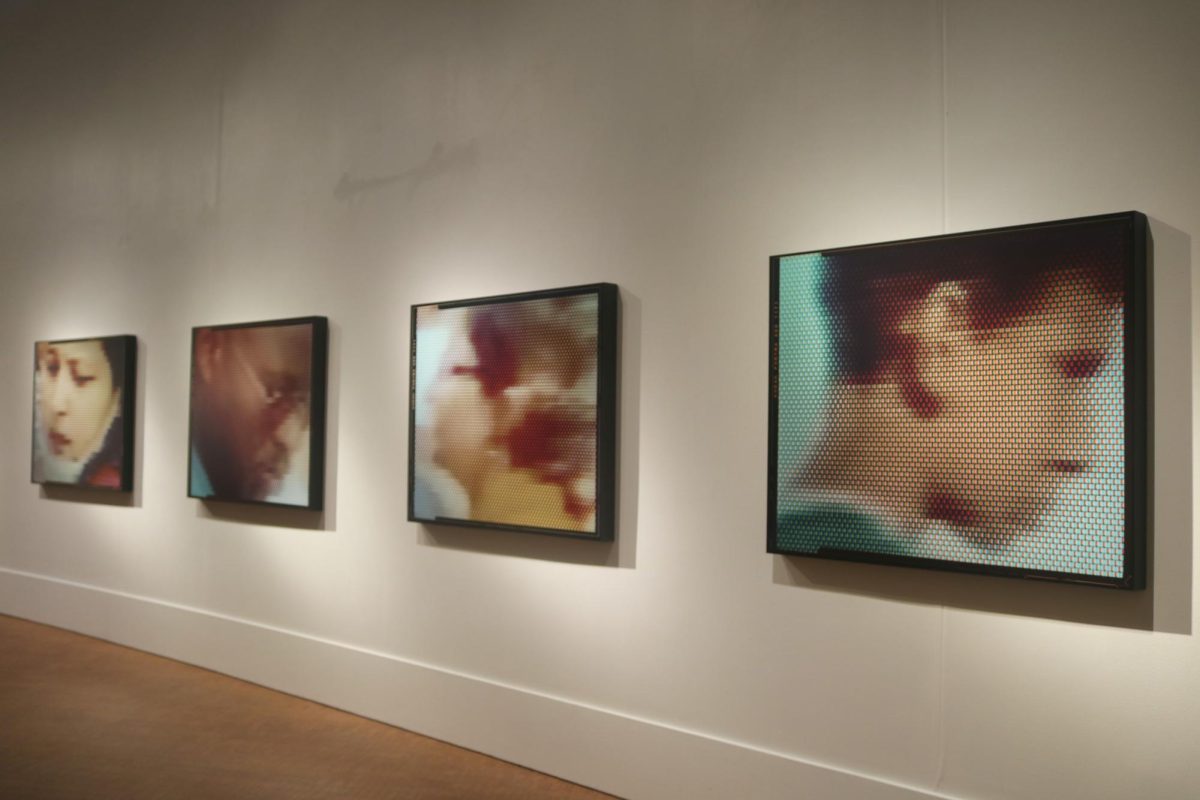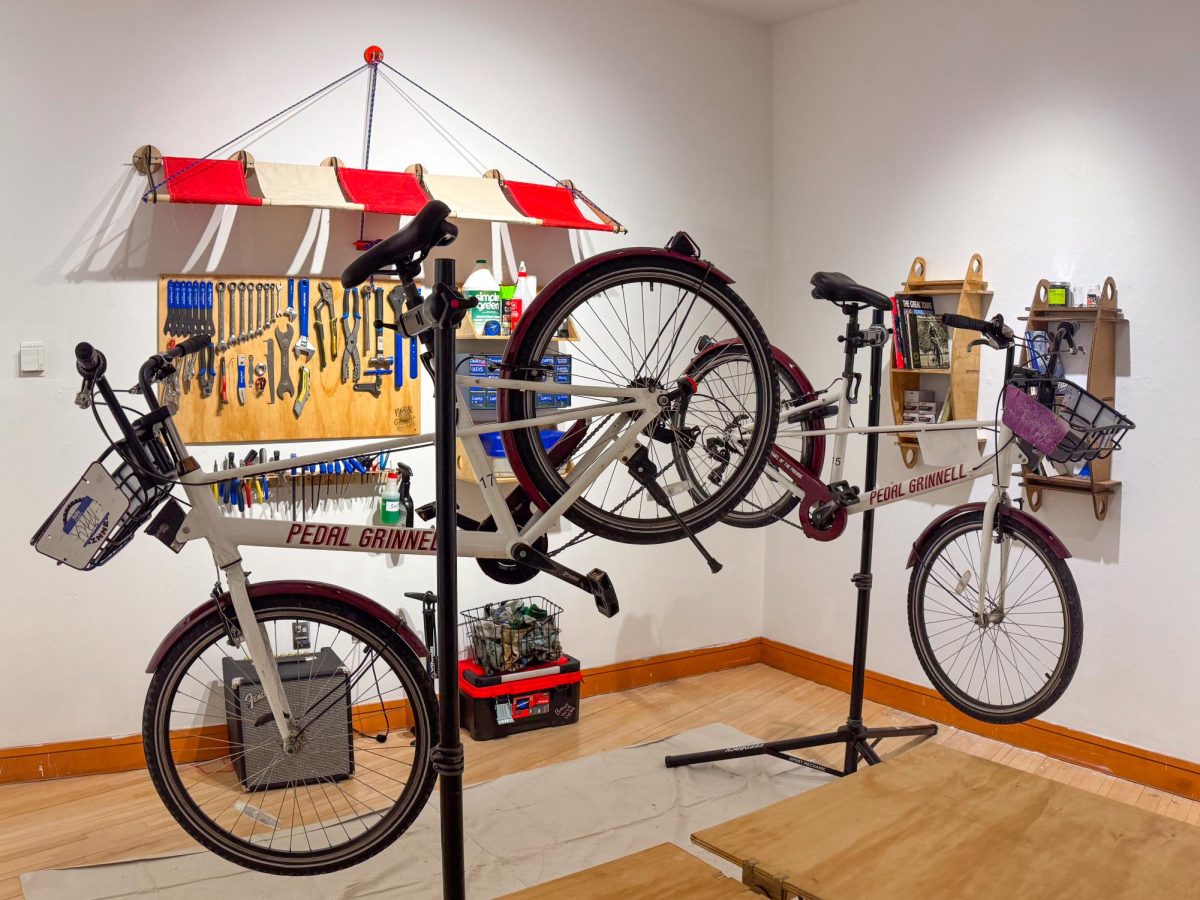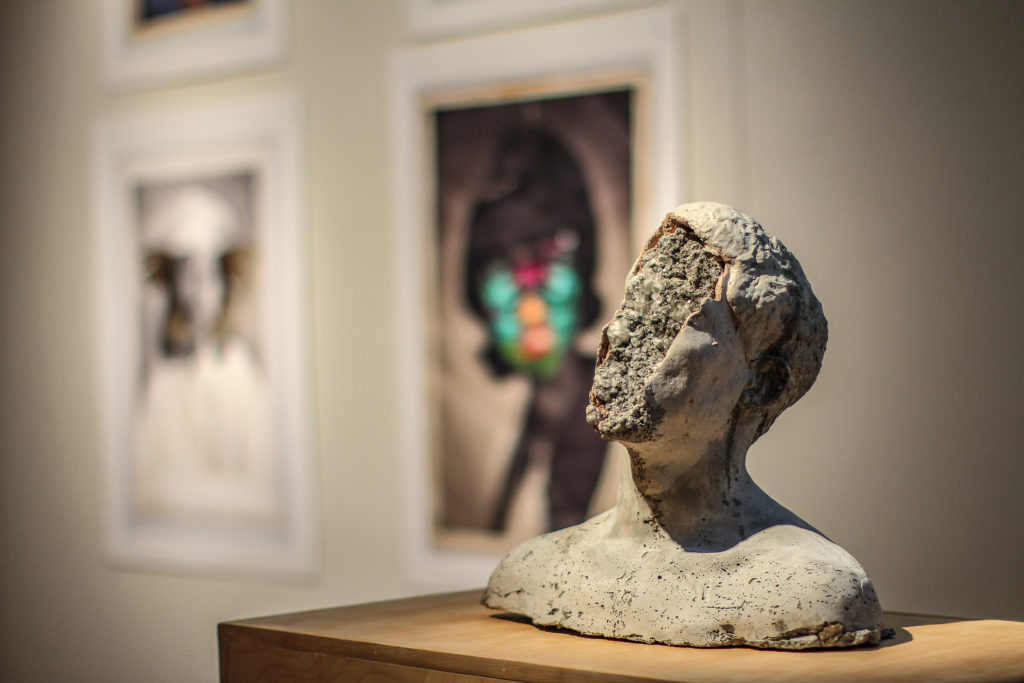
By Eva Hill
hilleva@grinnell.edu
The Grinnell College Museum of Art is opening its spring 2020 season with a show highlighting African American artists who explore complex themes through diverse media. The official opening reception will happen on Jan. 30 at 4 p.m., when Davis will give a tour of his exhibition in Faulconer Gallery and talk about his work during his Grinnell residency.
Works produced by artist, activist, musician and filmmaker Damon Davis during his September 2019 residency at the College occupy the largest section of the Museum. Davis gained national acclaim in 2014 after he created “All Hands on Deck,” a poster series showing human hands in the “hands up” position, over storefronts in Ferguson, Missouri that were boarded up during the trial of Darren Wilson for the killing of Michael Brown, an unarmed 18-year-old Black man. The College featured prints from “All Hands on Deck” in an exhibit last semester; now, some of Davis’s more recent work has taken residence in the back half of the gallery.
In these new pieces, Davis explores grief, beauty, nature and culture through a variety of media. One series, “Crack Sculptures,” consists of three concrete busts, cast from resin molds of Davis’s own body, that have parts of the face and head broken away and replaced by jagged outcroppings of geodes. In a description provided to The S&B by the museum, Davis describes the pieces as “an investigation of vulnerability, masculinity, grieving and trauma around loss and pain.”
One of the “Crack Sculptures” busts greets visitors as they walk towards Davis’s part of the gallery. Beyond the bust, several of the Museum’s movable walls surround a large area of empty floor, with more three-dimensional works on podiums throughout and a wide array of paintings in different formations.
Milton Severe, exhibition designer for the Museum, explained the benefits of working with a smaller exhibit, as opposed to “For Campus and Community,” a very large exhibit displayed last semester. “We have the luxury, this time, that there aren’t so many things that I can’t have breathing space,” he said. “I like to have resting spaces for people. … I think it’s really easy for people to just wander through. There’s a different vibe in every section.” Severe is responsible for designing lighting and wall formations that work with each exhibit, and he also communicates with artists to get their feedback on his arrangements.
Other parts of the exhibit are based in found objects, like “Our Lady of Utility,” a block of wood with imprints of a wasps’ nest laser-cut into one side and of a butterfly on the other. The work deals with themes of gender-based and environmental notions of beauty and safety. Daniel Strong, curator for the exhibit, said that the image of the butterfly comes from a real dead insect that Davis found on the sidewalk in Grinnell, and that the wasps’ nest was found on a farm. Davis’s description of the piece explains the butterfly and the nest as “a living being that is now deceased [and] a home built by living things, now vacant.”
Davis also used digital techniques to create some of the works in the collection, including studies of digitally collaged and edited family photographs, brightly-colored fantastical characters and digital collages inspired by themes from Davis’ multidisciplinary project Darker Gods.
Prints by Julie Mehretu make up the front half of the exhibition. Mehretu is known primarily for her large-scale many-layered paintings, which depict delicately abstracted architectural and natural forms. Excavation, the Museum exhibit, shows pieces from her first foray into printmaking in the mid-2000s.
Siri Engberg describes Mehretu’s art in “Beneath the Surface: Julie Mehretu and Printmaking,” an essay that is available for museumgoers to read in the exhibition catalog. She writes, “The real action in Mehretu’s work … is as much about erasure as it is about accumulation. … She finds potential in the breaking apart of a carefully constructed scheme, and the challenge of reinventing midstory.”
Mehretu’s prints, like her paintings, feature intricate abstract motifs of lines and markings over plans of airports and buildings, with a freedom and motion that defies the medium of printmaking. She introduces bright colors into the prints with stenciled blotches, playing with layering to create a complex and beautiful image. In one work, “Rogue Ascension,” Mehretu printed on both sides of a sheet of semitransparent vellum to create additional dimension. In several more, such as “Circulation,” “Diffraction” and “Local Calm” (a series created in the wake of Hurricane Katrina), she evokes images of birds and landscapes through chaos, coupled with the impressions of weather-monitoring technology.
“She’s always got these different kinds of marks, done in a different kind of mark-maker. … It’s very easy to get lost in [the prints], because if you look really closely at them, you do start to see things that at first you didn’t see,” Strong said.
The Grinnell College Museum of Art is open to the public staring at 11 a.m. on Jan. 24.























































